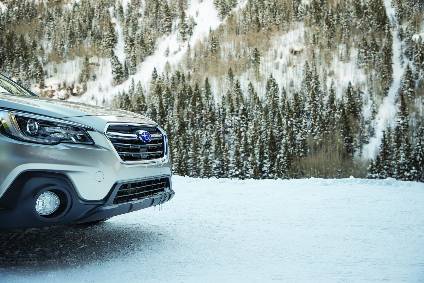
The wait is over; the other shoe has dropped. After seven consecutive years of growth, including a couple of consecutive all-time sales records, US light vehicle sales ran out of steam in 2017.
December sales totalled just over 1.6m, 5.0% below December 2016. Full-year deliveries came to nearly 17.25m, about 300,000 fewer cars and trucks than 2016’s record. However, 2017 was the third year in a row for sales above 17m units and that’s an industry record.

Discover B2B Marketing That Performs
Combine business intelligence and editorial excellence to reach engaged professionals across 36 leading media platforms.
The shortfall last month nevertheless yielded a fairly robust seasonally adjusted annualised rate (SAAR) of 17.85m compared to the 18.16m pace in the last month of 2016, which was the fifth-highest monthly reading in automotive history.
The soft landing came with a price. While estimated average transaction prices rose to new records, incentive spending cut deeply into those prices. It took some generous year-end deals and large amounts of cash on the hood to move the metal in 2017. ALG estimated that incentives averaged about 11.2% of the suggested retail price in December.
Fiat Chrysler Automobiles (FCA) was the big loser in 2017, giving up 0.8% of market share for the year. Ford and General Motors each added about 0.1%. The American brands claimed about 44.3% of total deliveries last year, which is still the lion’s share but that’s about 0.6% less than their share at the end of 2016. The Korean automakers’ continuing slump cost them 0.7% of the total market. The Japanese car companies added about 1% to their piece of the pie, which now stands of 38.9% of the total. The European companies picked up the rest, growing their share by 0.3%.
As they have been for a while, crossovers and SUVs remained the hot segment in December. Utilities accounted for more sales than any other vehicle type, claiming 46.5% of total sales.
Passenger car deliveries dropped 16.6% last month and made up just 30.7% total turnover.
The big pickups had a good month in December, led by the Ford F-Series, which notched its 41st year as America’s favourite truck with nearly 900,000 sales for the year. While sales of the smaller mid-size trucks stumbled, the F-Series, Chevrolet Silverado and Ram pickup locked up the top three spots again in full-year sales. The Toyota Camry kept its spot as the best-selling passenger car but it dropped from fourth to sixth in the overall rankings as it fell behind the Toyota RAV4 and Nissan Rogue.
While Lexus took December’s top spot among the premium brands, the margin was very close: just 258 sales separated it from runner-up Mercedes. In the full-year competition, it wasn’t even close: Mercedes-Benz was more than 31,500 sales ahead of BMW with Lexus finishing third.
New annual sales records were set last year by Audi, Honda, Jaguar Land Rover, Nissan and Subaru.
Forecasts for 2018 are generally in the high 16m range. The fundamentals are there, given the strength of the American economy and the low unemployment rate. Some automakers are optimistic that the recently passed tax legislation will spur more new-car sales but that may be one of those things that looks better on paper than it does in practice. It’s certain to be an interesting year.
* indicates a sales record.
**Volkswagen Group figures include Audi, Bentley, Porsche and Volkswagen brands
Other includes estimated sales for Aston-Martin, Ferrari, Lamborghini, Lotus, McLaren, Rolls-Royce and Tesla






